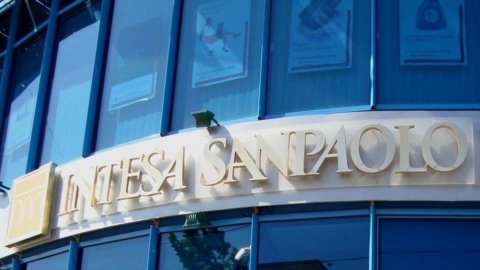In 2021, despite a very complex global scenario, Intesa Sanpaolo completed the Business Plan 2018-2021 achieving ESG results even higher than the stated objectives, through a strategy based on social, cultural and environmental sustainability and local roots, and confirming its capital solidity and ability to create long-term value for all stakeholders.
During the year, the ISP4ESG program, launched in 2019, involved all the divisions and governance areas of the Group in the process of integrating ESG logics within the business model and strategy of the banking institution.
Intesa Sanpaolo: goal of zero net emissions by 2050
In the last quarter in particular, a significant step in the banking group's journey in combating climate change was represented by the formalization of the commitment to the goal of net zero emissions by 2050, through adherence to all Net-Zero alliances promoted by the UNEP Finance Initiative: Net-Zero Banking Alliance (NZBA), Net Zero Asset Managers Initiative (NZAMI), Net-Zero Asset Owner Alliance (NZOA) and Net-Zero Insurance Alliance (NZIA).
More than a year ahead of the deadline set by the NZBA, Intesa Sanpaolo has also defined, within the 2022-2025 Business Plan, the objectives of reduction of emissions by 2030 aligned to net zero for the oil & gas, power generation, automotive and coal mining sectors, which account for more than 60% of funded issuance of the portfolio of non-financial firms in the NZBA-reported sectors.
In particular, in September 2021 the bank undertook to adopt and implement the Stakeholder Capitalism Metrics developed by the World Economic Forum, indicators included for the first time in the DCNF 2021, while the first TCFD Report was published last October.
In 2021 loans with a high social impact for 20,6 billion
Among the main 2021 results of thesustainability commitment of the Group are loans with a high social impact for 20,6 billion euros (27% of the total), of which 14 in support of the production system during the health emergency (43 billion euros since the beginning of the pandemic), green loans and circular economy for 8,7 billion euros (11,2% of the total), more than tripled compared to 2020 (+213%), the monetary contribution to the community (with particular attention to art and culture) for over 80 million euro, credit to social enterprises and the Third Sector for over 460 million euro (about 1,2 billion euro since 2018).
Furthermore, the Group has had leadership in sustainable investments and in the digital, attention to people's well-being by enabling 78.000 of them to smart working and providing 13 million hours of training, around 4.000 people hired (almost 60% women).
Intesa Sanpaolo continues to be a reference model for sustainability, as demonstrated by its positioning in the main international indices and rankings: it is the only Italian bank present in the Dow Jones Sustainability Indices World and Europe and is ranked first among peers by MSCI, Sustainalytics and Bloomberg (ESG Disclosure Score); in 2021 it was the best European bank and the best Italian company for ESG aspects in the Institutional Investor ranking and in October 2021 it was included in the new Euronext – Borsa Italiana MIB ESG Index.
With the new 2022-2025 Business Plan, the Group intends to further strengthen its leadership in the ESG area with a position at the top of the world for social impact and great focus on climate.





